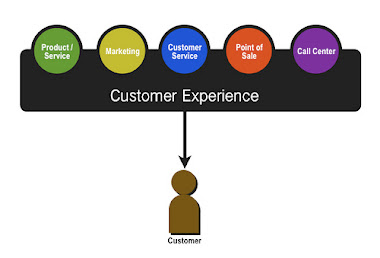6 Disciplines to Behind Customer experience ( Part 1 of 2 )
Strategy
The strategy discipline is your game plan. It's a set of practices for crafting a customer experience strategy, aligning it with the company's overall strategy and brand attributes, and then sharing that strategy with employees to guide decision-making and prioritization across the organization.
The customer experience strategy defines the intended experience. For example, the experience at Costco--a warehouse store in the United States where customers push giant carts through huge aisles stacked high with value-priced products--is very different from the experience at an Apple store, where customers see a comparatively sparse selection of pricey products and get expert assistance with picking the right one. Costco's experience aligns with its overall strategy as a cost leader; Apple's aligns with its strategy of innovation.
The strategy discipline is critical because it provides the blueprint for the experience you design, deliver, manage, and measure. Without it, you, your employees, and your partners won't know whether to deliver an experience like the one at Costco, at Apple, or somewhere else entirely. Worse, you could deliver a Frankenstein experience of mismatched parts, like putting an Apple genius bar in the middle of a Costco store where customers wouldn't care about it but would worry that prices were going up to pay for it.
Customer Understanding
The customer understanding discipline is a set of practices that create a consistent shared understanding of who customers are, what they want and need, and how they perceive the interactions they're having with your company today. In other words, it's the thing that replaces everyone's best guesses about customers with real, actionable insights about customers.
The customer understanding discipline is bedrock. Without this level of insight, you're liable to frustrate and annoy your customers with your well-intentioned efforts to serve them. When Geek Squad, the U.S.-based computer services company, interacts with its customers, it deals with them differently, depending on which customer archetype they correspond to. A customer could be "Jill," a suburban mom who uses her computer and other information technology daily. To her, technology is like plumbing and Geek Squad is like a plumbing company that she calls when she wants a leak fixed.
However, a Geek Squad customer could also be "Daryl," who loves getting his hands dirty but sometimes gets into trouble when one of his tech projects goes awry. Trying to engage a Jill in the same way as a Daryl would be disastrous. When Geek Squad is at Daryl's house he enjoys chatting about the gory details of the latest innovations, a conversation that would bore Jill senseless.
Design
The practices in the design discipline help organizations envision and then implement customer interactions that meet or exceed customer needs. It spans the complex systems of people, products, interfaces, services, and spaces that your customers encounter in retail locations, over the phone, or through digital media like websites and mobile apps.
Design weeds out bad ideas early and focuses your customer experience efforts on changes that really matter to customers. By leveraging expertise and ideas from customers, employees, and partners, it encourages creative solutions--and helps avoid missteps by grounding those solutions in reality.
To envision and define the store experience his customers want to have, Office Depot built a "planogram lab"--a prototype store in a nondescript office complex near company headquarters in south Florida. That lets CEO Kevin Peters bring in customers to help design the shopping experience that's just right for them, and then test those designs out on other customers. Everything from the amount of floor space to where products appear on shelves to where employees stand when they stock those shelves was designed from the ground up.

No comments:
Post a Comment